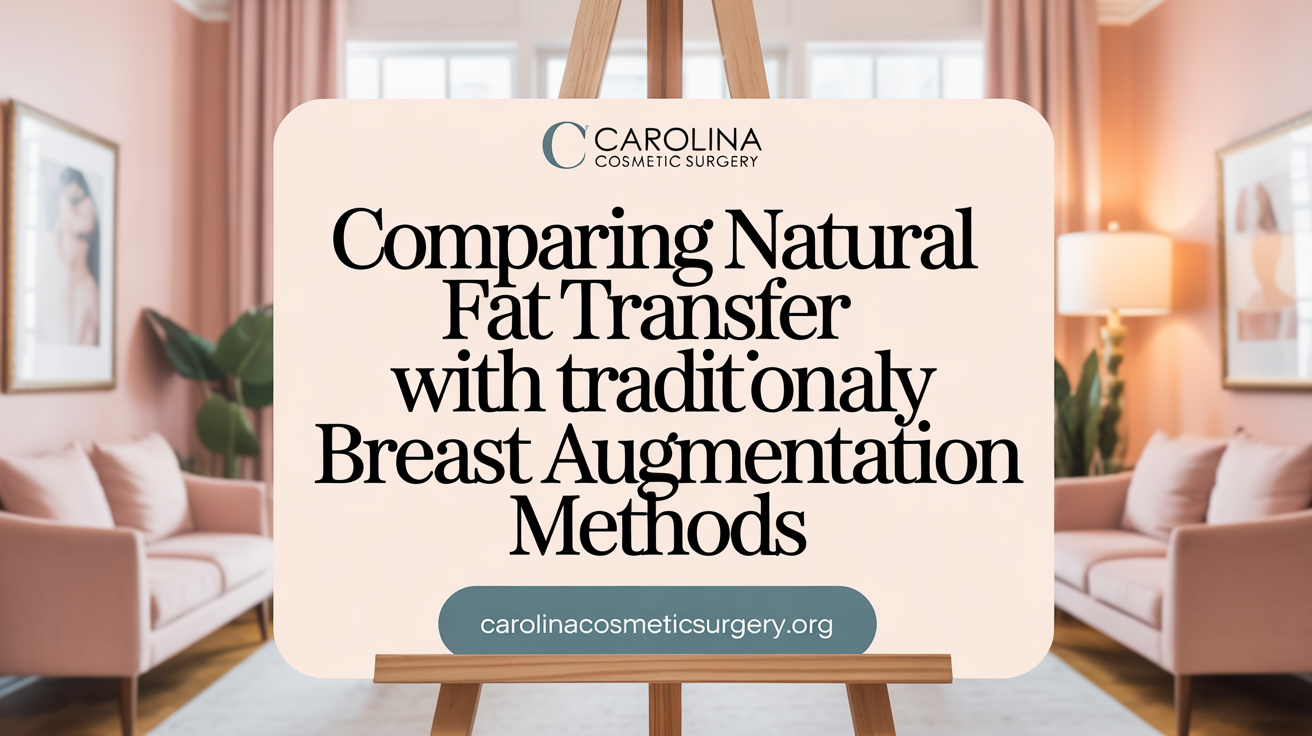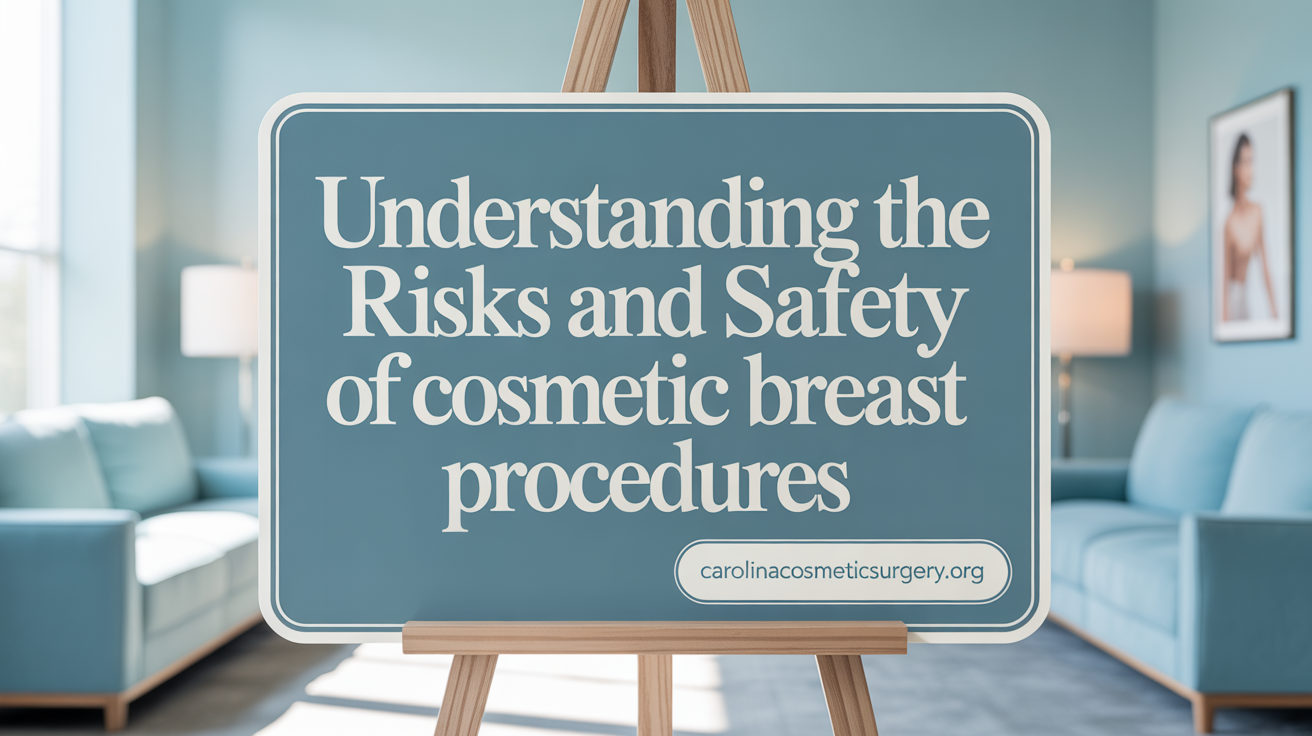Understanding Breast Augmentation with Fat Transfer
Breast augmentation with fat transfer is a cosmetic procedure gaining popularity for those seeking a natural enhancement without synthetic implants. This technique uses a patient's own body fat to increase breast size and contour, offering a less invasive alternative to traditional implant surgery. In this article, we delve into how the procedure is performed, its advantages and limitations, recovery expectations, safety concerns, and factors to consider before choosing this method.
What Is Fat Transfer Breast Augmentation and How Is It Performed?

What is fat transfer breast augmentation and how is the procedure performed?
Fat transfer breast augmentation is a minimally invasive natural enhancement method that involves harvesting fat from the patient's own body, such as the abdomen, hips, thighs, or flanks. The procedure begins with liposuction, which removes unwanted excess fat from these donor areas.
Once collected, the fat undergoes a purification process to eliminate impurities and fluids, ensuring only healthy, viable fat cells are used. These purified fat cells are then carefully injected into the breasts using fine needles, contouring and increasing volume subtly.
Procedural steps including liposuction, fat purification, and injection
The process follows three main steps:
- Liposuction: Small incisions are made in the donor areas, through which a thin tube (cannula) suctions out excess fat.
- Purification: The extracted fat is processed in a special centrifuge or filtration system to remove blood, oil, and other fluids.
- Injection: The purified fat is injected in multiple layers into the breast tissue, shaping the breasts for a natural appearance.
Typical operative time and anesthesia used
The entire procedure usually takes between three to five hours. It is performed under general anesthesia to ensure patient comfort.
Expected size increase and permanence of results
Most patients see a modest increase of about one cup size. Results are considered long-lasting as the transferred fat integrates with natural tissue; however, approximately 30-50% of the fat may be reabsorbed by the body over time. To compensate for this, surgeons often over-inject slightly.
Suitability for modest breast enhancement
Fat transfer is ideal for women desiring a natural look with a slight increase in breast size. It is not suitable for women seeking significant volume enhancement, as the procedure's capacity is limited.
| Step | Description | Typical Duration | Anesthesia Type |
|---|---|---|---|
| Liposuction | Harvesting fat from donor areas | 1-2 hours | General or local |
| Fat Purification | Processing the fat to purify and concentrate it | 30 minutes - 1 hour | - |
| Fat Injection | Injecting fat into the breasts | 1-2 hours | - |
This technique offers a natural alternative to implants, with benefits including reduced risks of rejection and complications, minimal scarring, and the added advantage of body contouring.
Benefits and Drawbacks Compared to Breast Implants

What are the benefits of breast augmentation with fat transfer compared to implant-based methods?
Breast augmentation with fat transfer provides a naturally looking and feeling breast because it uses your own organic fat tissue. This reduces the risk of allergic reactions or rejection that are associated with foreign materials like silicone or saline implants. Additionally, since the procedure involves liposuction from areas such as the abdomen, hips, or thighs, it not only enhances the breasts but also helps reduce stubborn fat in other parts of the body.
The results tend to be subtle and riskier than implants in terms of predictability, but they often offer a quicker recovery and minimal scars because it involves small incisions for liposuction and injections. Most women see an increase in size of about a half to one cup, making it ideal for those seeking modest enhancement.
However, it is important to note that the injected fat can be reabsorbed by the body over time, which means results might diminish, and multiple procedures could be necessary to achieve or maintain desired size. On the other hand, implants provide a more immediate and larger size increase with predictable results, and they come in various shapes and sizes to meet individual preferences.
In summary, fat transfer offers a more natural solution with fewer risks related to foreign materials, quicker recovery, and additional body contouring benefits. Yet, it is limited in how much it can enlarge the breast, usually up to one cup size, and results can vary due to fat absorption. The right choice depends on personal goals, anatomy, and risk considerations.
Risks, Limitations, and Impact on Breast Health

What are the risks and potential downsides associated with fat transfer breast augmentation?
Fat transfer breast augmentation is generally considered a safe procedure, but it does carry certain risks. Common complications include bleeding, bruising, and infection, which are typically manageable but require monitoring. One specific concern is the formation of benign breast cysts or calcifications—tiny calcium deposits—that can appear as microcalcifications on mammograms. These are usually harmless but can sometimes mimic signs of breast cancer.
A notable risk is fat necrosis, where some of the transferred fat cells die due to disrupted blood supply. This can lead to lumps, cyst formation, skin discoloration, and slight changes in breast appearance. Additionally, because not all the injected fat survives, the results can be unpredictable, with approximately 30-50% of the fat reabsorbing over time. This might necessitate multiple procedures to maintain desired volume.
Minor issues such as asymmetry or contour irregularities may occur but often resolve without surgery. Overall, while complications are generally mild, patient awareness and close follow-up are vital to ensure safety.
Who Is a Suitable Candidate and What to Expect During Recovery?

Who is considered a suitable candidate for fat transfer breast augmentation?
Suitable candidates for fat transfer breast augmentation are generally women in their late 20s to early 40s seeking a modest and natural-looking increase in breast size. They should be in good health, with stable weight and enough excess fat in areas like the abdomen, thighs, or flanks to be harvested. Candidates need realistic expectations, understanding that they can typically expect about a one-cup increase, and that some of the transferred fat may be reabsorbed over time—between 50% and 90%. This procedure works best for individuals wanting subtle enhancement and hoping to avoid the risks associated with implants.
A thorough evaluation of body fat stores is essential to ensure suitability. Not everyone qualifies, especially very lean individuals, as sufficient fat reserves are necessary. Patients should also be aware that results are generally permanent but can diminish, and multiple sessions may be necessary to achieve optimal volume. Clear communication with a skilled surgeon helps set realistic goals and ensures the best possible outcome.
What are typical recovery expectations and post-procedure care after fat transfer breast augmentation?
Postoperative recovery from fat transfer breast augmentation often involves manageable swelling, bruising, and mild discomfort at both the donor and target sites. Swelling usually begins to subside within three to five weeks. Many patients experience minimal pain, but some soreness is common, warranting over-the-counter or prescribed pain medication.
During the initial days, patients should arrange for responsible adult assistance while traveling and performing daily activities. Strenuous activities, heavy lifting, and vigorous exercise are typically restricted for at least three weeks. It’s recommended to sleep with the head elevated to help reduce swelling and to wear compression garments for about two weeks to support healing.
Patients must keep incisions clean and dry, avoiding baths, hot tubs, swimming, and sun exposure to scars for several months to prevent infection or scarring issues. Monitoring for signs of complications such as fever, excessive pain, redness, bleeding, or unusual drainage is important. Follow-up appointments are critical for monitoring healing progress and ensuring the fat transfers are stabilizing properly.
Most individuals can return to light activities within a few days, but full recovery, including swelling resolution and final skin settling, typically takes 3 to 6 months. The patience during this period helps ensure the best results and reduces the risk of complications, leading to natural, lasting augmentation.
Fat Survival Rates, Aesthetic Results, and Long-Term Considerations
What is the success rate of fat transfer breast augmentation in terms of fat survival and aesthetic outcomes?
The success rate of fat transfer breast augmentation in terms of fat survival varies typically between 55 and 80 percent. This means that over time, this proportion of the injected fat remains viable within the breast tissue, contributing to the final volume.
Aesthetic results are generally natural-looking, with most women achieving an increase of about half to one cup size. These outcomes tend to last several years, often between two and five, depending on individual factors like body metabolism and lifestyle.
Several factors influence how well the transferred fat survives and how the final aesthetic results turn out. These include the patient's overall body fat reserves, adherence to post-operative care instructions, the surgeon’s experience, and the technique used during the procedure. Proper handling of the fat and careful placement help maximize fat retention.
While many results are long-lasting, some fat can be reabsorbed by the body over time. This may result in slight diminishment of volume, necessitating additional procedures to maintain or improve results.
Changes in weight and aging can impact the longevity of the augmentation. Significant weight loss can reduce fat volume, and aging may lead to skin sagging, which fat transfer alone cannot correct.
To achieve an optimal body contour, fat transfer is often combined with other procedures such as a breast lift or additional liposuction to improve shape and symmetry. Combining these treatments enhances overall aesthetic harmony.
| Success Rate | Expected Size Increase | Longevity | Factors Affecting Outcomes |
|---|---|---|---|
| 55-80% | About 1 cup size | 2-5 years | Surgeon skill, fat quality, post-op care |
| 50-70% fat survival | Modest (up to one cup) | Variable | Patient health, body fat reserves, lifestyle |
Overall, when performed by experienced surgeons, fat transfer breast augmentation offers satisfying, natural results with the benefit of simultaneous body contouring, though it requires realistic expectations regarding size increase and potential for future touch-ups.
Deciding if Fat Transfer Breast Augmentation Is Right for You
Breast augmentation with fat transfer presents a compelling option for those seeking a natural, subtle enhancement without implants. It combines body contouring through liposuction with breast augmentation using your own tissue, providing a softer feel and fewer risks associated with synthetic implants. However, its limitations in size increase, variability in fat survival, and the potential need for additional procedures must be carefully weighed. Candidate suitability depends heavily on available donor fat and realistic goals for modest volume gains. Consulting with an experienced plastic surgeon can help you understand whether fat transfer aligns with your aesthetic desires and health profile, allowing you to make an informed decision about this increasingly popular approach.
References
- Fat Transfer Breast Augmentation: Procedure, Results & Risks
- Pros and Cons of Breast Fat Grafting - Matthew J. Lynch, MD
- Pros and Cons of Fat Transfer | Understand Risks & Benefits
- Fat Transfer Breast Augmentation - Duke Health
- The Pros and Cons of Breast Augmentation with Fat Transfer
- Fat Transfer to Breast Pros and Cons | Dr Mohan
- Fat Transfer Breast Augmentation Pros and Cons
- Pros & Cons of Breast Fat Transfer | Richmond Aesthetic Surgery
